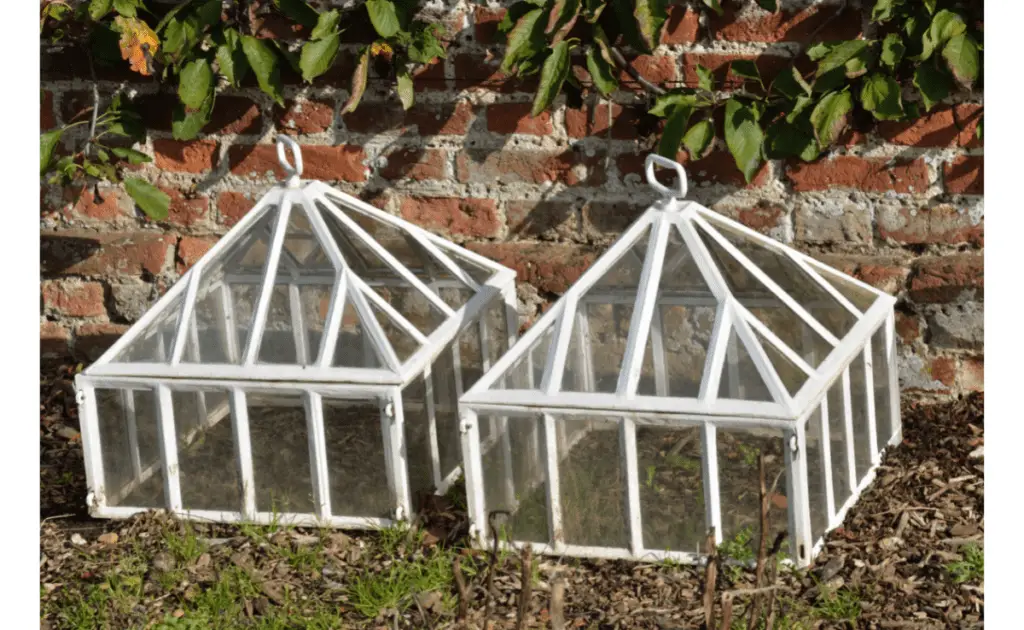
Gardening enthusiasts are resorting these days to the use of a garden cloche for growing plants. This equipment, which was designed initially for use in the early 17th century, still finds relevance today. That is because it functions in the form of a scaled-down form of the greenhouse for keeping plants safe from harmful elements. Find out more about greenhouses in our article here.
If you too are curious about learning about how to incorporate this effective and easy-to-use equipment in your garden, you have reached the right place. Keep reading to find out how to use garden cloche for improving the quality of your plants.
What does a garden cloches do?
A cloche comes in a design that is essentially bell-shaped because it effectively distributes and reflects light, and the heat that is captured in it envelopes a plant (kept inside the cloche) for an extended time period. This enhances the most-appropriate conditions that plants need for healthy growth. Additionally, it also engulfs that plant with humidity (moisture), lowering the need for watering the plant on a frequent basis.
This gardening equipment can also act as an incubator for tender seedlings and new sprouts, protecting these tiny life forms from frost, adverse temperatures, heavy rainfall, animals that feed on tender baby plants, and strong winds.
Some of the benefits of installing a cloche in your gardens include:
- Increasing the temperature for plants– In order to assist crops with early germination, this equipment pre-warms your soil during the spring, thereby lengthening the cropping season’ and providing maximum usage of the ground available. Cloches can increase the temperature of the soil up to an impressive 10 degrees Celsius, which speeds up the process of directly-sown crop germination by at least 10 to 14 days. Want some more tips on starting a garden early? Check out our post on What Month Should You Start a Garden!
As a result, the air temperatures are raised and the escaping of heat during the night is lowered. Eventually, the harvesting of crops is much earlier than usual (3 to 4 weeks for most crops). Using cloches made from glass works best as glass retains maximum heat during nighttime.
- Safeguarding against bad weather conditions-Protecting your plants from wind will improve their leaf surface area’ along with growth rates while ensuring softer’ plant growth. Leafy plants like cabbage, spinach, and salads, which need such softer’ growth, can benefit most from this garden installation.
Additionally, young plants can benefit from cloches because they protect these plants from heavy rainfall and hail, both of which tend to damage the seedbed, structure of the soil, the plants, and contaminate the crops due to splashed soil’.
- Protection from diseases and pests- With the garden cloche to protect your plants, you create a physical barricade for the plants from diseases and pests. While this equipment is not as functional as an insect-proof’ mesh or fleece in protecting against pests, it can effectively ward off any injury caused by birds.
You will keep your plants safe from any air-borne afflictions by making your cloche well-ventilated. Diseases like tomato blight and onion downy mildew can be averted if the amount of wetting due to rain is lowered, which is possible with a properly-ventilated cloche. This type of installation can protect plants from foliar diseases that thrive on moisture on the foliage or leaves.
- Safeguarding against over-wintering of crops- Garden cloches also provide shielding during autumn and prevent over-wintering of crops like chicory and carrots. They also buffer’ the temperature to encourage late ripening of crops like chilies and tomatoes, keeping such plants protected from early frost season.
The first thing you will need is a cloche of your choice that will be sufficiently large so that it can cover the plant entirely. This equipment should be wider and taller than that plant placed underneath it. If the cloche isn’t wide or tall enough, there will be restrictions on the growth of that plant.
After this, a vent has to be made in the cloche. If the cloche is made using a plastic bottle, then you must puncture holes to create a vent. Also, using a cloth plug the holes up if the weather is frosty. Alternatively, you can make use of the bottle cap to create a vent that is ready-made.
Cut out the bottle’s bottom part to make it the cloche’s top. Next, place the plant under the cloche. If the soil texture is dry, you must add moisture to the soil before placing the plant. You wouldn’t want your plant to be dry and hot within the cloche.
Next, monitor your plant after the cloche is placed over it. When the outside is sunny, you will probably have to open up the vent or remove your cloche completely to keep the plant from getting overheated.
Close the cloche’s vents up if the weather predicts a cold and frosty night. Also, use a warm blanket over the equipment to add additional heat and protection from cold.
If necessary, set alarms to maintain the timings of closing or opening the vents or the entire cloche, so that the growth of the plant is not compromised.
How do you water under a garden cloche?
You can water the plant under this equipment either by taking off the entire cloche to add water to the plants or by making a hole on the cloche’s sides (towards the bottom part) to water the plant. In the former case, a release of heat while watering your plant can defeat the purpose of the cloche. However, when making a hole, you can prevent heat loss. Plug up the watering hole when done watering your plant.
You may alternatively use the vent to add water to your plant. For this, you will need a narrow-spouted watering can or a hose. However, make sure that the leaves of your plant are not wet in the process of watering because that can cause disease or rot in the plant.
Do you need a cloche?
Installing a cloche in your gardens will definitely benefit you in many ways, which have been listed above. These installations work just like a greenhouse or a polytunnel, but unlike mini-greenhouses or cold frames, cloches can be transported easily.
You can use this equipment for protecting your plant variety including cut flowers, vegetables, strawberries, etc. You can use it to cover seedlings and seedbeds at the beginning of the season, while at its end you can protect and ensure the ripening of autumn crops like peppers, eggplants, and tomatoes. But you must ensure that a cloche is well-anchored because can easily blow away if not properly secured.
Now that you have a good idea about how to use garden cloche, get ready for the next crop season with your equipment. Not only will it provide proper surroundings for the healthy growth of your plants, but will also help in the ripening of plants during harsh weather conditions.
How do you use a glass cloche in the garden?
- Glass cloches are mostly the same as a clear plastic cloche. Both will help your garden grow, with 3 differences.
- Cloches (except wire) are meant to provide protection from the elements and keep plants and seeds warm. A glass cloche can sometimes be too warm. Make sure to remove cloches when the temperature is beyond freezing. There are many cloche ideas about when to remove them so use your best judgment.
- Glass provides a better view for your plants. Glass is easier to clean and save year to year. If you want more showy cloches glass will show of better. Glass and heavier cloches plants safe from animals as well.
Cloche not working
Cloches serve two purposes Protect plants from animals and cloches help keep plants warmer in cold weather. Make sure it is not too cold to be using them they only provide 10-15 degrees of added warmth. Use heavier cloches if animals are getting into your cloches.
This post contains affiliate links. If you make a purchase through these links, we may receive compensation at no additional cost to you.

